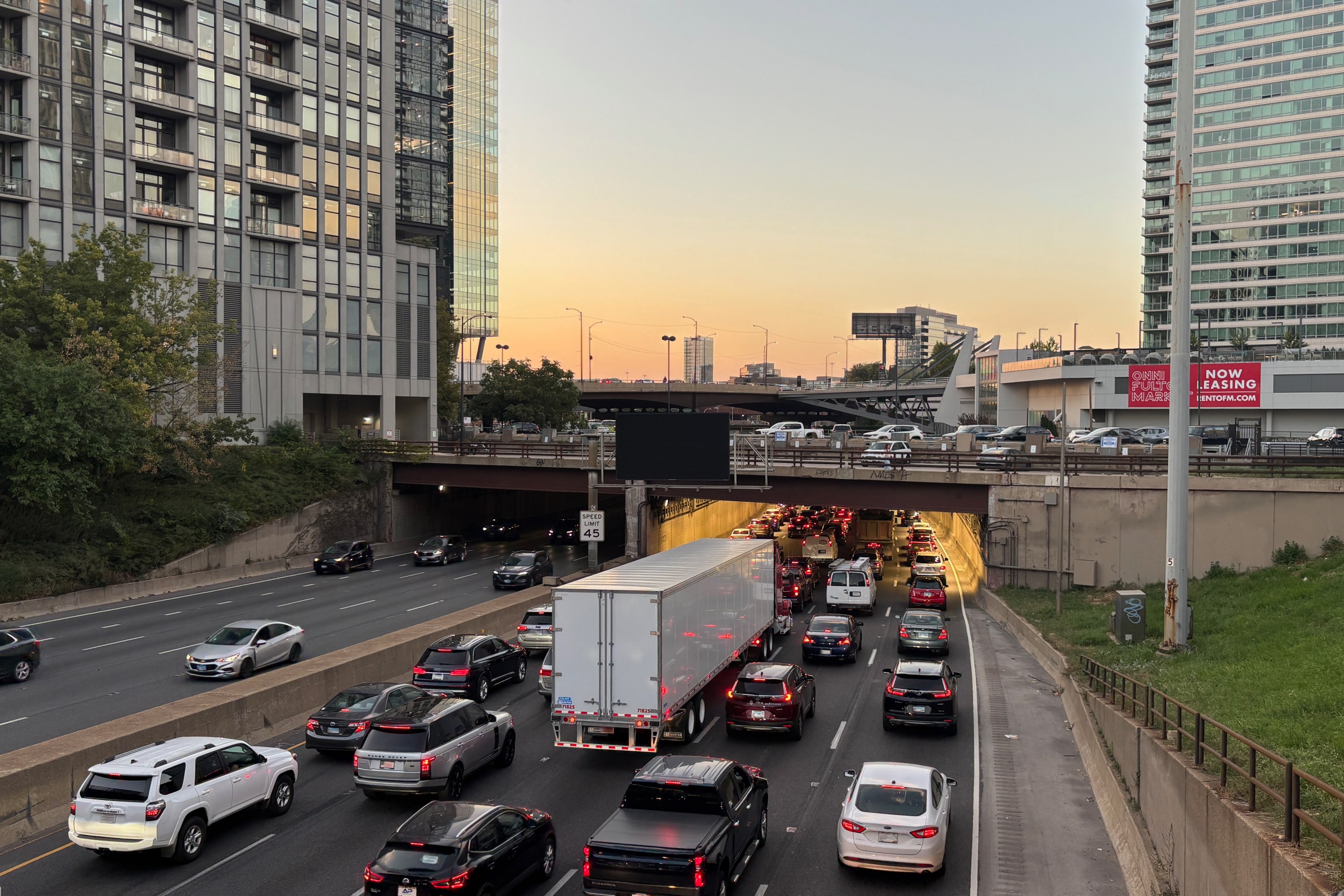The freight rail industry yesterday claimed the top three awards in the Obama administration's competition for $1.5 billion in TIGER stimulus grants, with Transportation Secretary Ray LaHood singling out train shippers for an online shout-out:
(Chart: AAR)
You know, although passengers and
commuters have human faces, we need to remember that trade depends upon
the safe, smooth, and efficient delivery of goods. Our groceries depend
upon it as well. And jobs depend on it.This DOT understands that.
But freight companies are hardly resting on their laurels today. The Association of American Railroads (AAR), a Washington trade group that represents freight movers as well as Amtrak, is just out with a report that carves out the industry's turf in a big way -- including a legislative wish list.
Titled Great Expectations, the report positions the freight industry as an economic powerhouse well-positioned to power the nation through a recovery from its lingering recession. Freight railroads generate $265 billion of economic activity per year while emitting 75 percent less than similar shipments carried by truck, according to the AAR.
To illustrate the financial might of the top U.S. freight companies, the AAR produced a chart (above) that compares train shippers' annual spending on capital infrastructure and maintenance with the highway budgets of major states.
So with the industry riding high from its stimulus victory, much to the dismay of its trucking competitors, what's standing in the way of a freight renaissance? Government regulations, according to AAR chief Edward Hamberger.
"Select legislative and regulatory proposals are creating an air of
uncertainty at a time when there is already too much of that," Hamberger said in a statement accompanying the report. "When so
much is riding on freight rail's ability to sustain a healthy national
rail network necessary to help America through to economic recovery,
now is not the time to undermine our financial viability."
The AAR report puts federal policymakers on notice on several fronts. After praising the White House's multi-billion-dollar high-speed passenger rail program, which is proving a boon to freight firms that control most existing local tracks, the AAR warns: "[T]he development of a world-class passenger rail system must not come at the expense of our country’s existing world-class freight rail system."
Another bogeyman for the freight industry -- despite its efforts to play up its own environmental upside -- is the prospect of carbon emissions caps that could negatively impact Big Coal. The AAR report effectively lashes coal and freight's fates together:
The impact of climate change policies on the railroad industry cannotbe weighed without first examining the impact such policies would haveon America’s coal industry. Coal generates close to half of America’selectricity, and railroads haul more than 70 percent of it.
Freight companies are also lamenting the government's mandate for positive train control (PTC), a computerized safety program recommended by Congress after a fatal commuter train crash in Los Angeles in 2008. Citing Federal Railroad Administration data, the AAR report puts the 20-year price tag of PTC installation at up to $14 billion and adds that "this well-intended legislation will have negative unintended real-world consequences."
Yet the industry is not wholly concerned with beating back federal measures that could hurt its bottom line. The AAR report makes a concerted push for a 25 percent tax credit that would reward any company spending money on rail infrastructure.
Late Update: Matthew Lewis of the Center for Public Integrity notes that the AAR has a lobbying team well-stocked with congressional veterans and former advisers to both GOP and Democratic presidents. Check out this map for more details.





